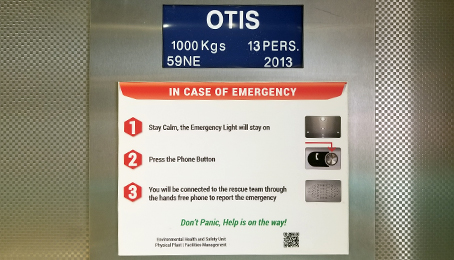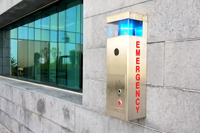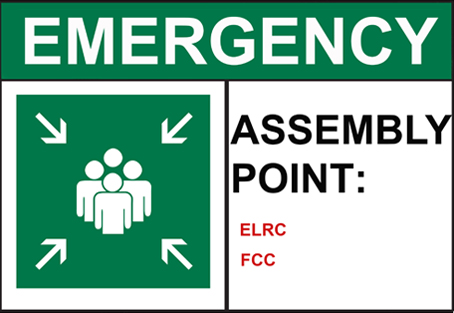Facilities Management FM
Plan, Build, Operate and MaintainEmergency Preparedness

Effective emergency operations require organized and trained personnel who follow predetermined procedures to protect people, property and the environment.
Decisions regarding emergency plans should take into account the potential effects of hazards, the availability and capability of internal and external resources, regulatory requirements, and management support (NFPA 1600, National Preparedness Standard).
Emergency Response Plan (Fire)
- Remain calm — Do not shout “Fire!”
- Rescue personnel or students who are in immediate danger
- Sound the alarm by pulling a manual pull station
- Contain the fire by closing (not locking) doors and windows to isolate fire and smoke
- Extinguish the fire by using the nearest extinguisher, if you are trained to do so*
- Evacuate to the nearest assembly point (do not use elevators)
- Do not re-enter the building until you are told by the incident commander that it is safe to do so
*See: How to use a Fire Extinguisher
Emergency Response Team (ERT)
LAU is committed to spreading safety awareness and practices within the community. At the same time, preventive measures cannot assure elimination of all risks. Therefore, we are constituting an ERT construction to take your calls 24/7 and support emergent incidents. The team’s role will be to provide first and basic response during different types of emergencies and to perform limited rescue services.
Evacuation Plans
Evacuation plans are provided at LAU dormitories, assembly areas and other locations as necessary.
An evacuation plan includes important safety instructions. It helps you locate yourself within a building and identify available exit corridors and stairs.
When you move into your room for the first time, kindly check the evacuation map (e.g. evacuation map installed in Dorms B, Room 711).
Safety Plans
Safety Plans familiarize students, faculty and staff on Beirut Campus (PDF - 1.8MB) and Byblos Campus (PDF - 2.8MB) with the locations of emergency phones and assembly points.
Emergency Phones
 Also called Blue Light phones, these phones are installed at strategic locations all over the campus. They allow students, staff and campus visitors to contact the Protection Office in case of emergency, and are easily identified by the blue lights on their tops.
Also called Blue Light phones, these phones are installed at strategic locations all over the campus. They allow students, staff and campus visitors to contact the Protection Office in case of emergency, and are easily identified by the blue lights on their tops.
Pressing the “EMERGENCY” button will activate a direct call to the protection office for prompt assistance. Users who accidentally activate the emergency link should remain on site and confirm to the Protection Office that they are not in danger.
Assembly Point
 Assembly points are prearranged assembly areas where occupants evacuating their buildings due to an emergency should gather. They should remain at the assembly point until the emergency is cleared, as announced by the incident commander.
Assembly points are prearranged assembly areas where occupants evacuating their buildings due to an emergency should gather. They should remain at the assembly point until the emergency is cleared, as announced by the incident commander.
